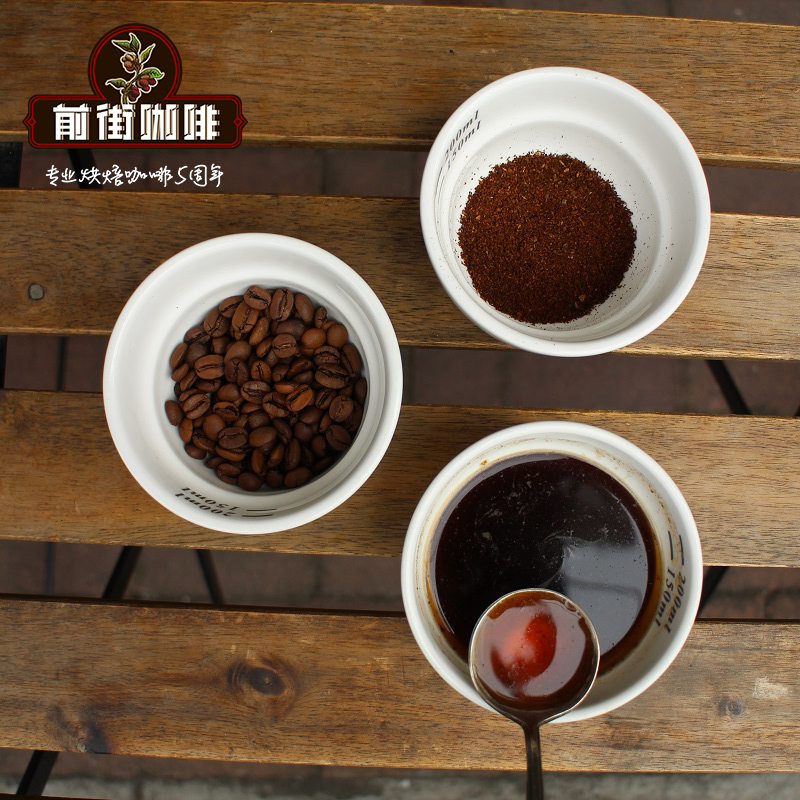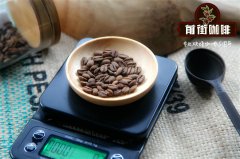Different roasting flavors of coffee beans from Santa Clara Manor, the famous Antigua region of Guatemala

Professional coffee knowledge exchange more coffee bean information please follow the coffee workshop (Wechat official account cafe_style)
What is the flavor of different roasted coffee beans at Santa Clara Manor in the famous Antigua region of Guatemala? How to cook it?
Guatemala coffee in Guatemala was introduced by missionaries in 1750. It was only in 1860 that the Germans expanded the entire industry. To date, about 60000 family farms operate the coffee industry in Guatemala. Coffee is grown in the Sierra Mountains near the Pacific coast. The Sierra range stretches across the country, rising to the Rockies and down to the Andes.
Due to the great regional climate change, coupled with differences in soil, rainfall, moisture, height, and temperature, there are seven different regional coffees in Guatemala: Antigua, Fraijanes Plateau, Rainforest Cob an, Highland Huehuetenango, Atitlan, Volcan San Marcos, and Oriente. Among them, Guatemala is famous for its Antigua coffee (Antigua).
Most of the coffee produced in Guatemala is Arabica, which is treated by washing. The height of the plant is between 2300 and 5600 feet. The harvesting method depends almost entirely on manual labor. It can be harvested all year round, but the main harvest period is from July to April of the following year.
Guatemala Antigua Coffee Guatemala-Genuine Antigua Coffee
Production area / Grade: Antigua / Screen 17 + the world-famous Antigua coffee has a ripe berry-like aroma, strong and strong.
The active volcano, which erupts every 30 years or so, enriches the already rich soil and gives the coffee a unique and strong tobacco flavor. The supple bitterness and charming tobacco flavor make the palate more rich and rich.
Why is Antigua coffee in Guatemala labeled as "real Antigua Genuine Antigua"?
Antigua, one of the best producing areas in Guatemala. The soil of Antigua is rich in sulfur, giving rise to mellow Aroma and a well-balanced taste. As long as the coffee produced in this region is always very popular, and is even willing to pay more to get it, there are many fake beans bearing the name of Antigua on the market. Farmers in Antigua, who believe that the situation is very serious, have set up the Genuine Antigua producers Association (APCA) in order to prevent this from happening and to maintain the quality of Antigua producing areas. The officially recognized excellent farms are listed below, and the sacks are shipped with the words (APCA) members printed on them. The so-called GENUINE is "real", and "Genuine Antigua" is "real Antigua".
Guatemala has the best coffee growing environment in Central American countries, including the perfect combination of coffee growth height, fertile soil and coffee growing climate. The coffee produced in the Guatemala-Antigua region is the most famous, and when it comes to it, people think of the unique smoky taste and the sweetness of milk chocolate. The best quality Antigua coffee is Guatemala Antigua-Alpine volcanic beans produced on small farms in the volcanic area.
Light baked City (fragrance): hazelnut with blueberry aromas, grapefruit acidity is subtle and bright, smooth taste, this baking degree of sweetness is the sweet fruit of Hawthorn.
Medium baking (general B): hickory fruit, acidity becomes very soft and slightly upward at the end, the taste is thin, sweet milk chocolate, sweet with the finish of peanut powder.
Heavy baking (general C): chocolate replaces the aroma of hazelnut and appears after acid cooling. The taste is moderately sticky and smooth. Sweetness is the smell of maltose after baking, and the delicate smoky taste appears in Huigan.
When baked to a slightly thicker (Full-City+ or dark), the aromas of chocolate and cocoa are attractive but the palate remains delicate, clean and subtle.
Santa Clara Manor in Antigua, Guatemala
Guatemala Antigua Santa Clara SHB
Antigua volcanic area of Guatemala
Producing area: Antigua
Producer: Santa Clara Manor
Altitude: 1600 Murray 1830m
Variety: bourbon
Treatment: washing
Grade: SHB
Flavor description: dry aroma for warm almonds, toffee caramel, roasted nuts. Sipping grapefruit, orange juice, lime, grapefruit, orange and other rich citrus fruits, with aromas of plum, caramel and sweet hazelnut on the finish.
Santa Clara Manor is located in the Antigua producing area in southern Guatemala. The planting area is concentrated in the Antigua Valley (Antigua Valley) surrounded by Acatenango, Agua and Fuego volcanoes. Because the volcanic ash from the volcano is rich in minerals, it brings sufficient nutrients to the soil in the region and provides excellent drainage for coffee cultivation. Santa Clara Manor, which is about 1600 to 1830 meters above sea level, is run by the Zelaya family and has been passed on to the fourth generation with more than 100 years of planting experience. The family not only insists on quality, but also attaches great importance to environmental protection and sustainable management. Therefore, shading trees are planted in the garden to prevent coffee trees from being directly exposed to the sun, while maintaining soil moisture, preventing soil erosion, and providing a good habitat for birds and other organisms. Santa Clara Manor has achieved good results in COE competitions in Guatemala over the years and is a well-known star estate in Antigua.
Qianjie cuisine is recommended:
The ratio of gouache to powder is 1:15, the grinding degree of small Fuji is 3.5 and v60 filter cup, and the first injection of 30g water is steamed for 28-30s.
With the condition of steaming and the size of the expansion, it is necessary to determine how long it will take to flush with fine water. After steaming, the coffee powder basically still contains some air.
In the second water injection, there will be foam, and the thickness of the foam represents the air content in the coffee powder. The amount of air in the coffee powder determines whether the coffee powder floats on the water surface or precipitates at the bottom of the filter. There is a lot of air, and the coffee powder floats on the water surface, so it is necessary to use a gentle flow of water to disturb the coffee powder and let the air out of the coffee powder.
Inject 110g water, cut off water at 140g, wait for the water in the powder bed to reach half, then inject water slowly until 225g, do not need 5g at the end, and the extraction time is 2VR 00s.
Important Notice :
前街咖啡 FrontStreet Coffee has moved to new addredd:
FrontStreet Coffee Address: 315,Donghua East Road,GuangZhou
Tel:020 38364473
- Prev

Recommendation of individual coffee beans | Mamakat Manor in Panama | Solar Iron pickup
Professional coffee knowledge exchange more coffee bean information please follow the coffee workshop (Wechat official account cafe_style) in addition to the following introduction of coffee, Qianjie hand-made coffee beans recommended-Panamanian Alida Manor Solar Iron truck Panamanian Poquette Markat Manor Solar Strawberries, Peach, Western Pear, Banana, jujube, Walnut country / Panama Panama
- Next

Ethiopian Coffee | Watkonga strict selection of Red Cherry | recommendation of individual coffee beans
Professional coffee knowledge exchange more coffee bean information please follow the coffee workshop (Wechat official account cafe_style) front street coffee individual coffee bean recommendation-Ethiopian Coffee Yega Sheffield Red Cherry Project Ethiopia-Yega Sheffield Watt Conga strict selection of Red Cherry Sun Ethiopia-Yirgacheffe Wotte Konga Washing Station Gr1 Nat
Related
- Detailed explanation of Jadeite planting Land in Panamanian Jadeite Manor introduction to the grading system of Jadeite competitive bidding, Red bid, Green bid and Rose Summer
- Story of Coffee planting in Brenka region of Costa Rica Stonehenge Manor anaerobic heavy honey treatment of flavor mouth
- What's on the barrel of Blue Mountain Coffee beans?
- Can American coffee also pull flowers? How to use hot American style to pull out a good-looking pattern?
- Can you make a cold extract with coffee beans? What is the right proportion for cold-extracted coffee formula?
- Indonesian PWN Gold Mandrine Coffee Origin Features Flavor How to Chong? Mandolin coffee is American.
- A brief introduction to the flavor characteristics of Brazilian yellow bourbon coffee beans
- What is the effect of different water quality on the flavor of cold-extracted coffee? What kind of water is best for brewing coffee?
- Why do you think of Rose Summer whenever you mention Panamanian coffee?
- Introduction to the characteristics of authentic blue mountain coffee bean producing areas? What is the CIB Coffee Authority in Jamaica?

